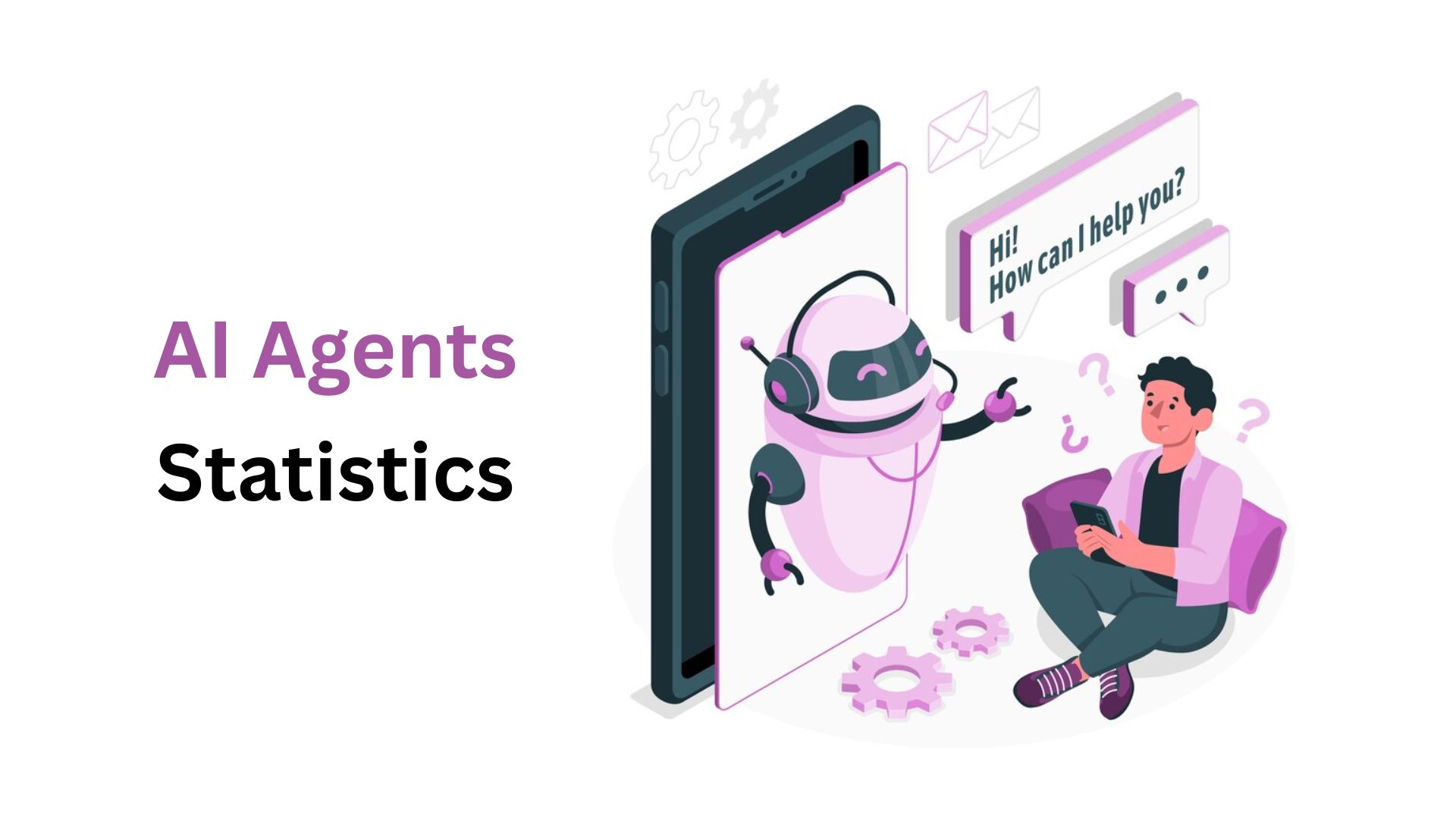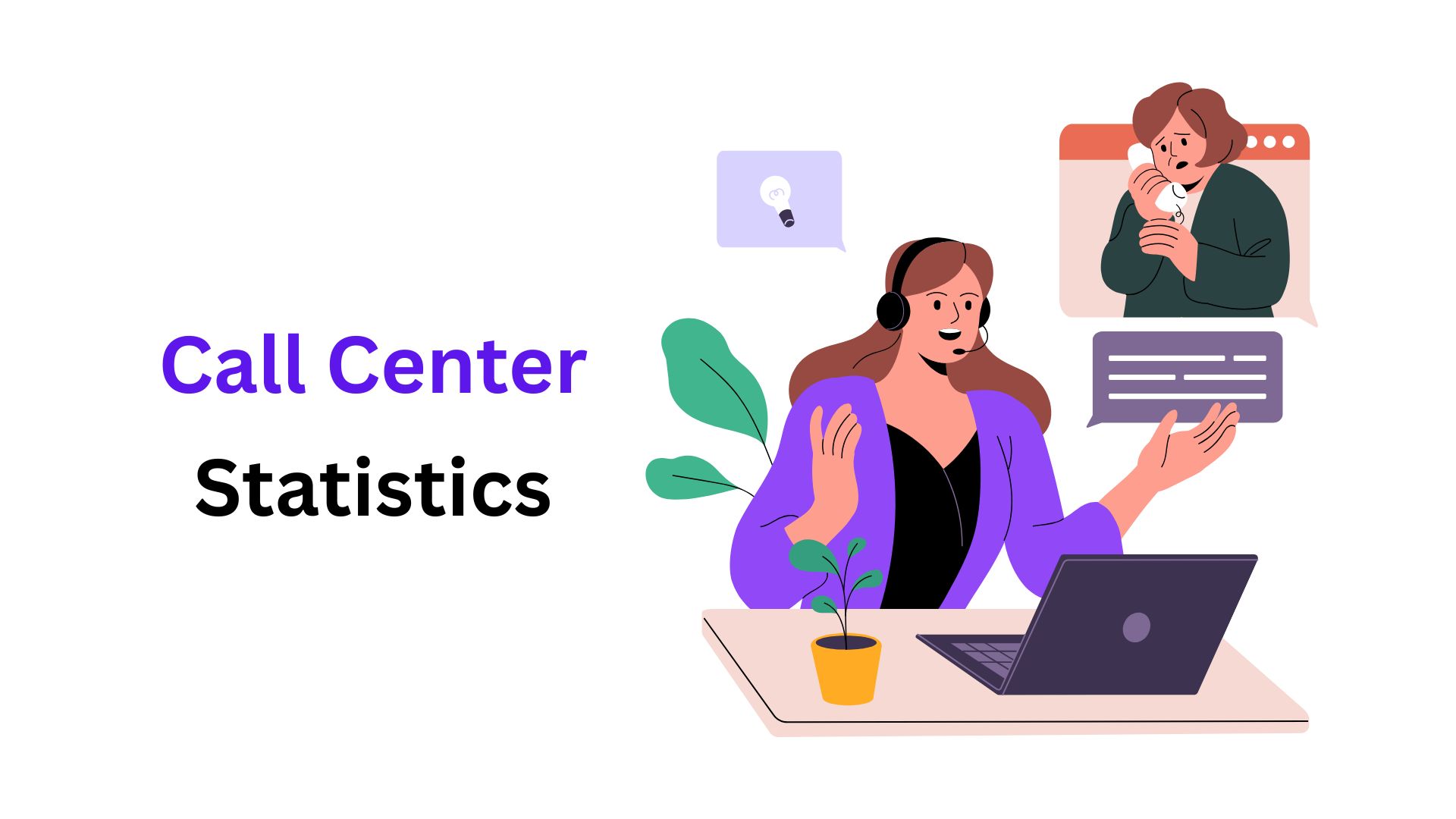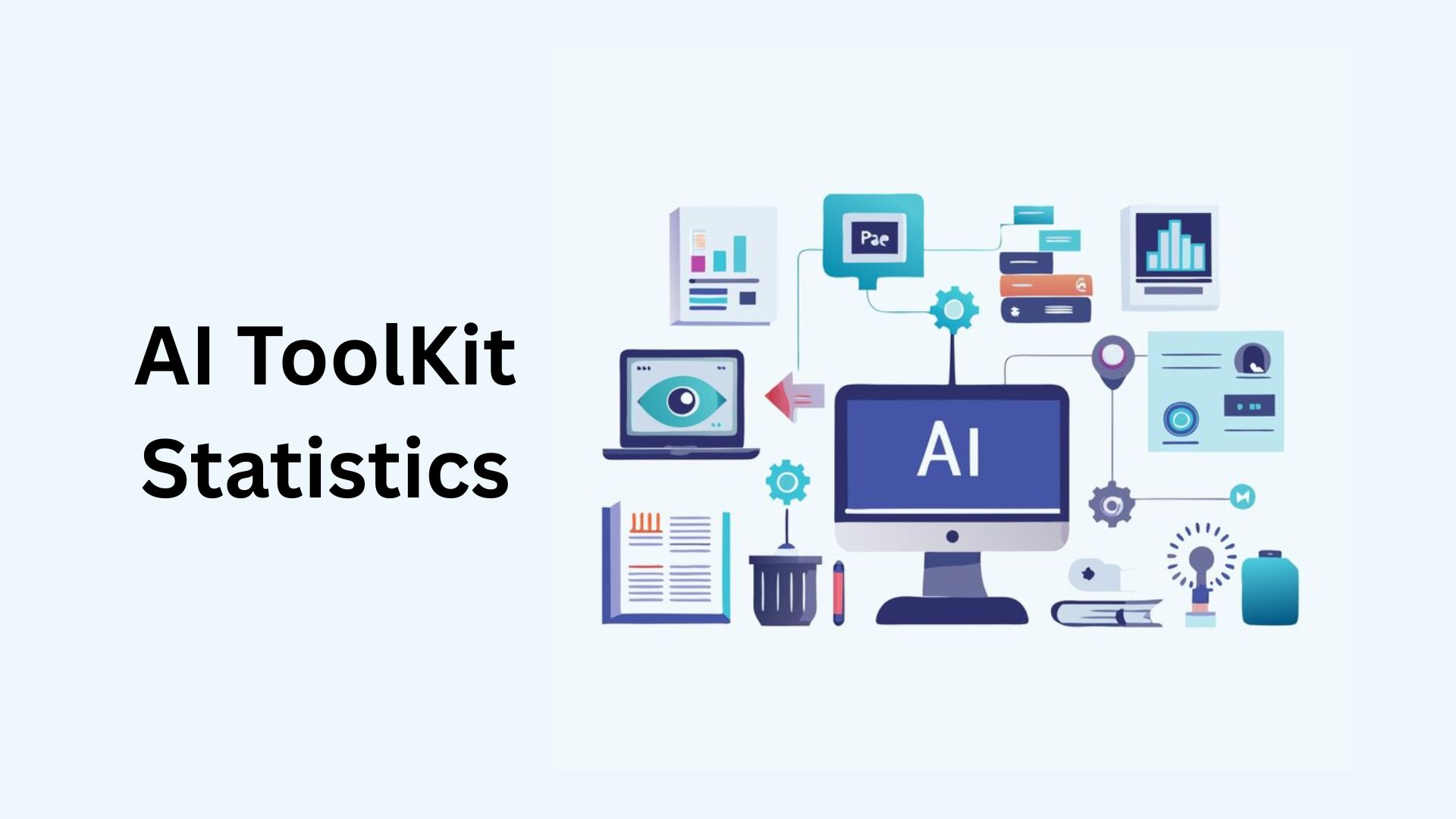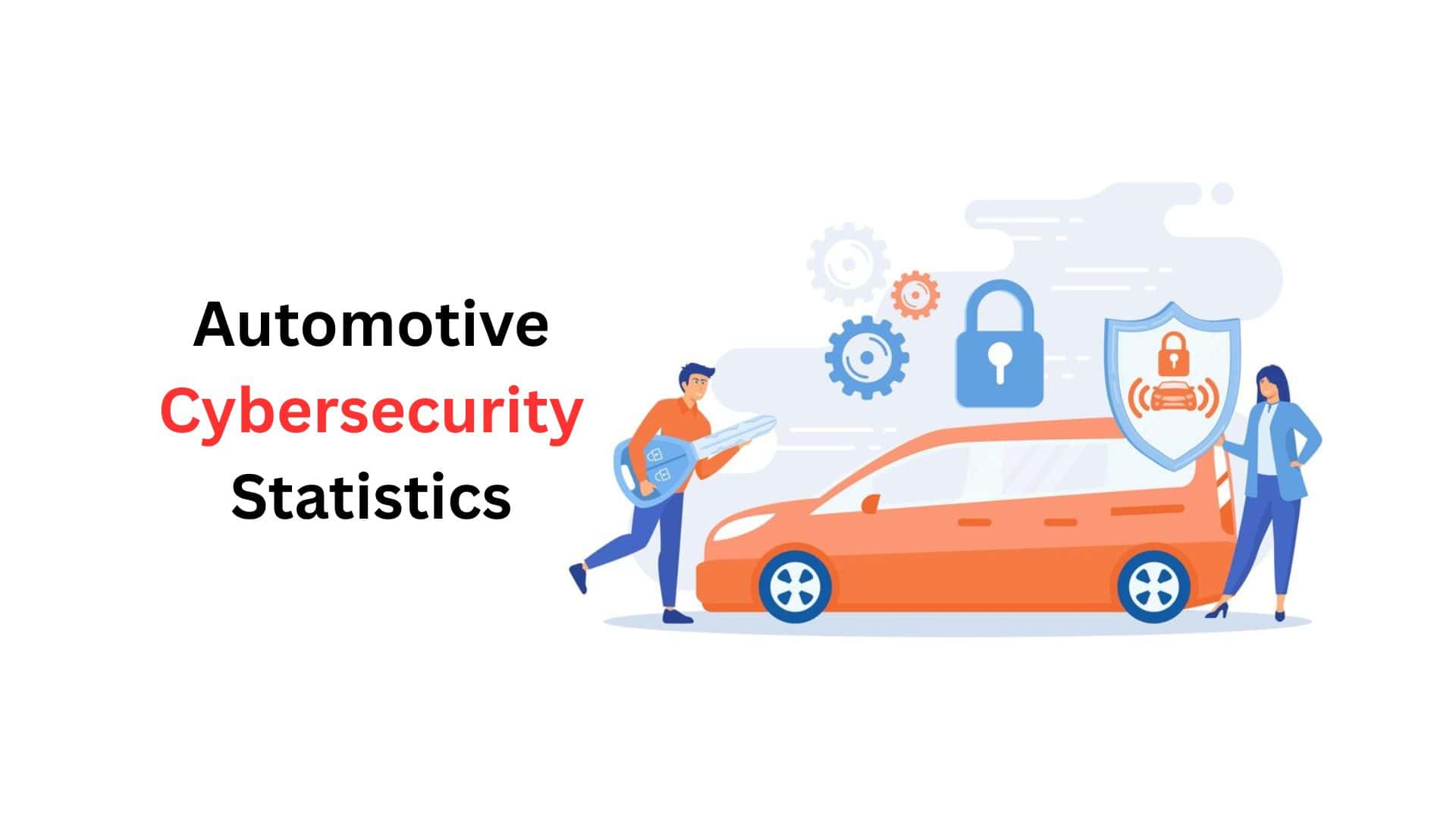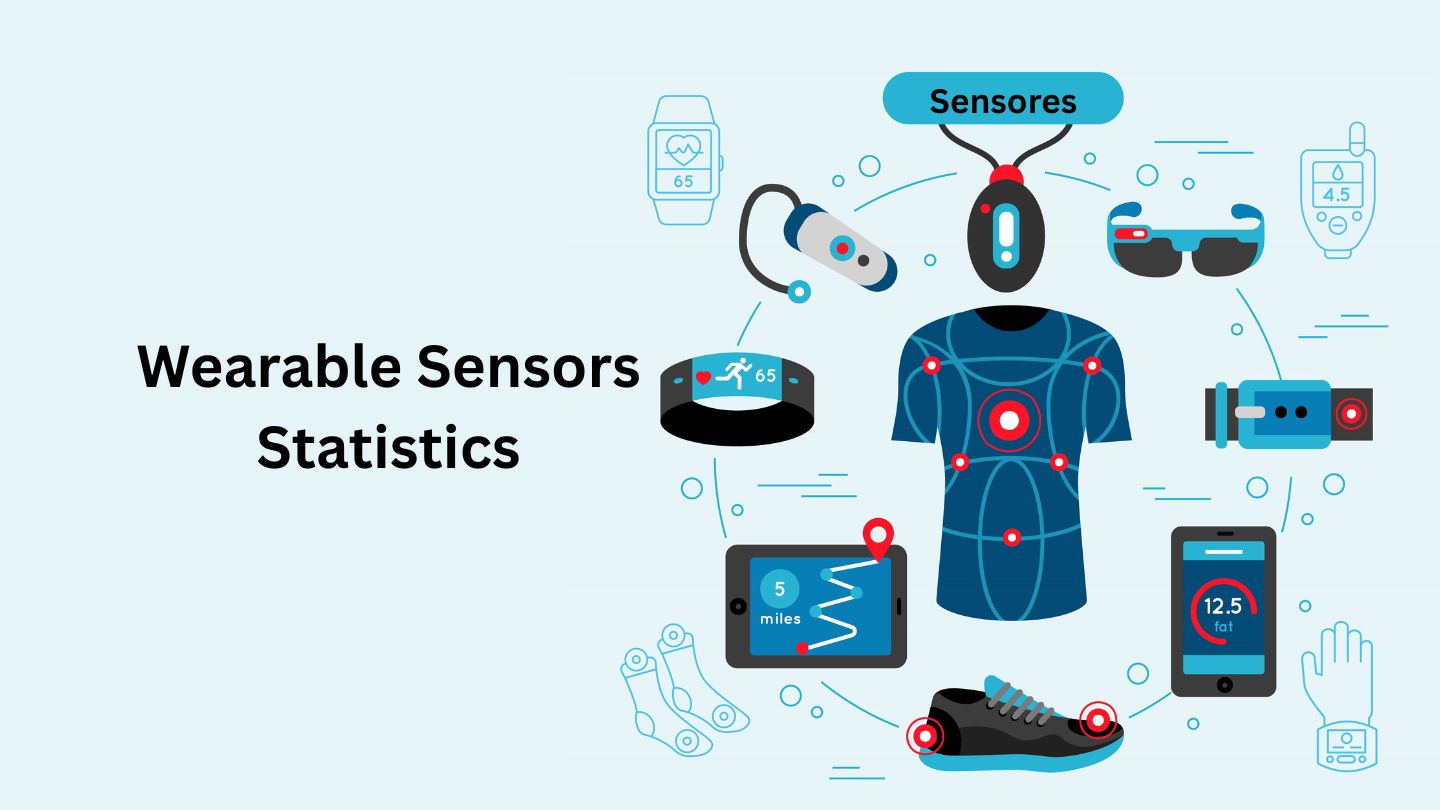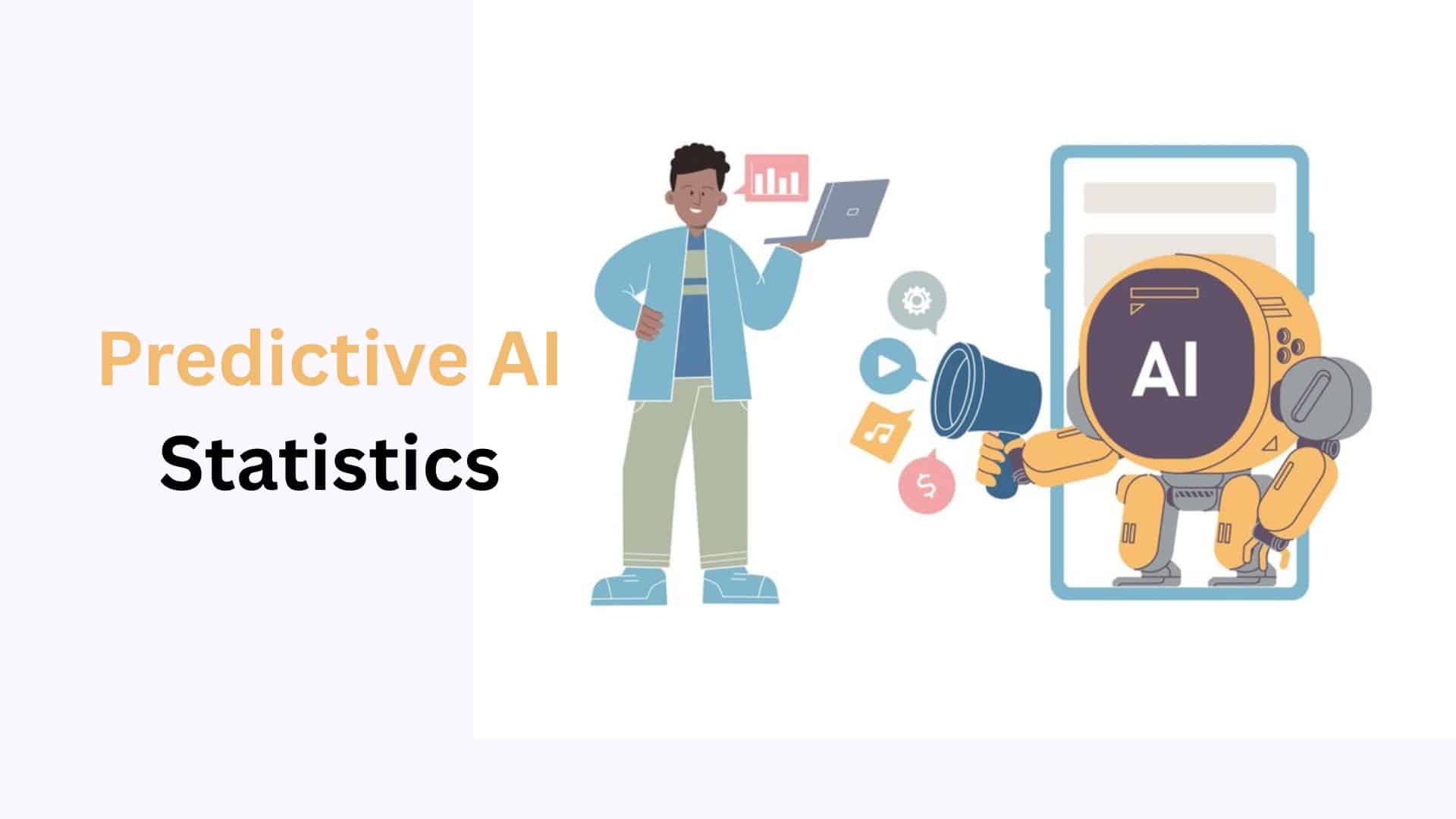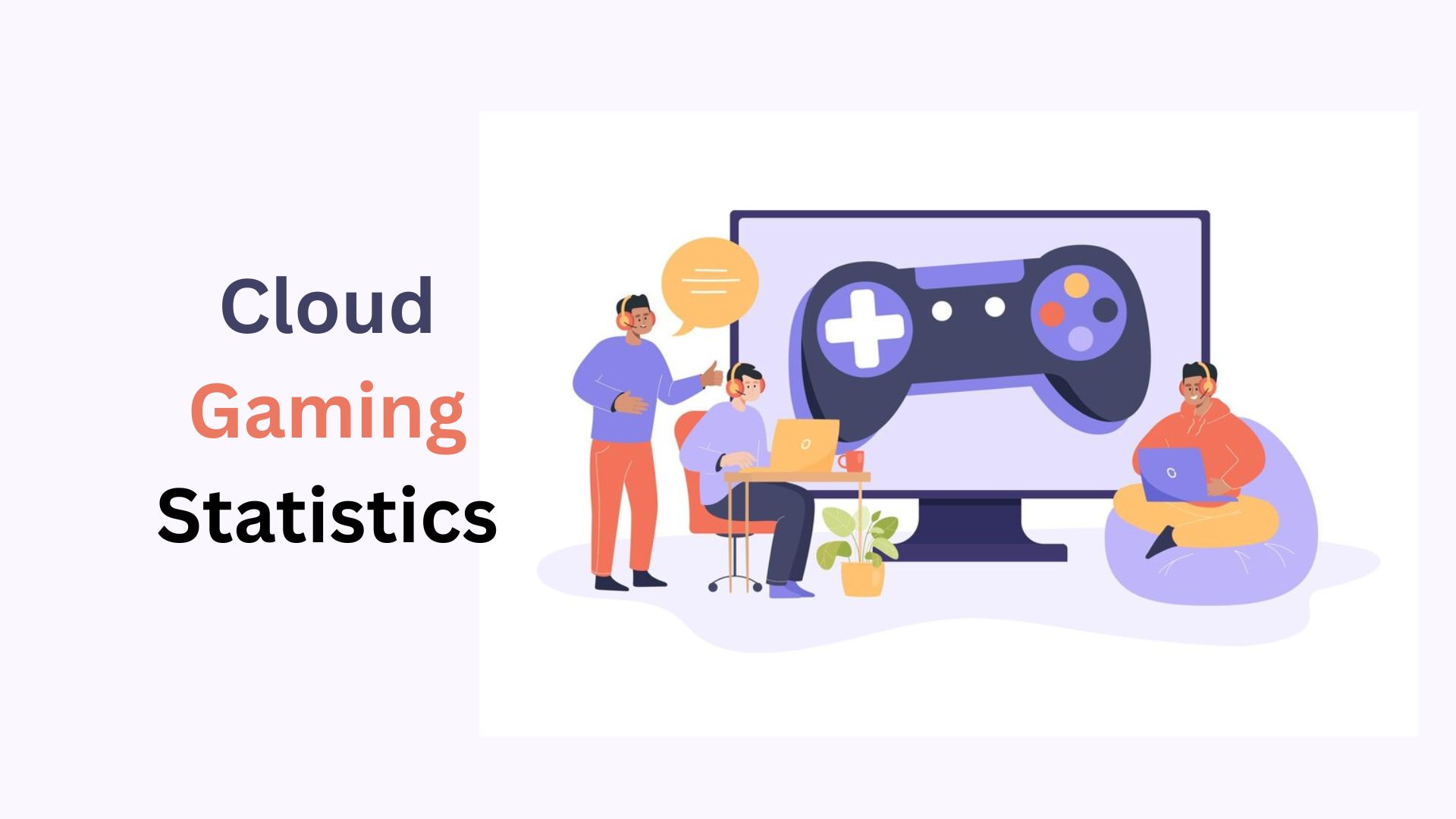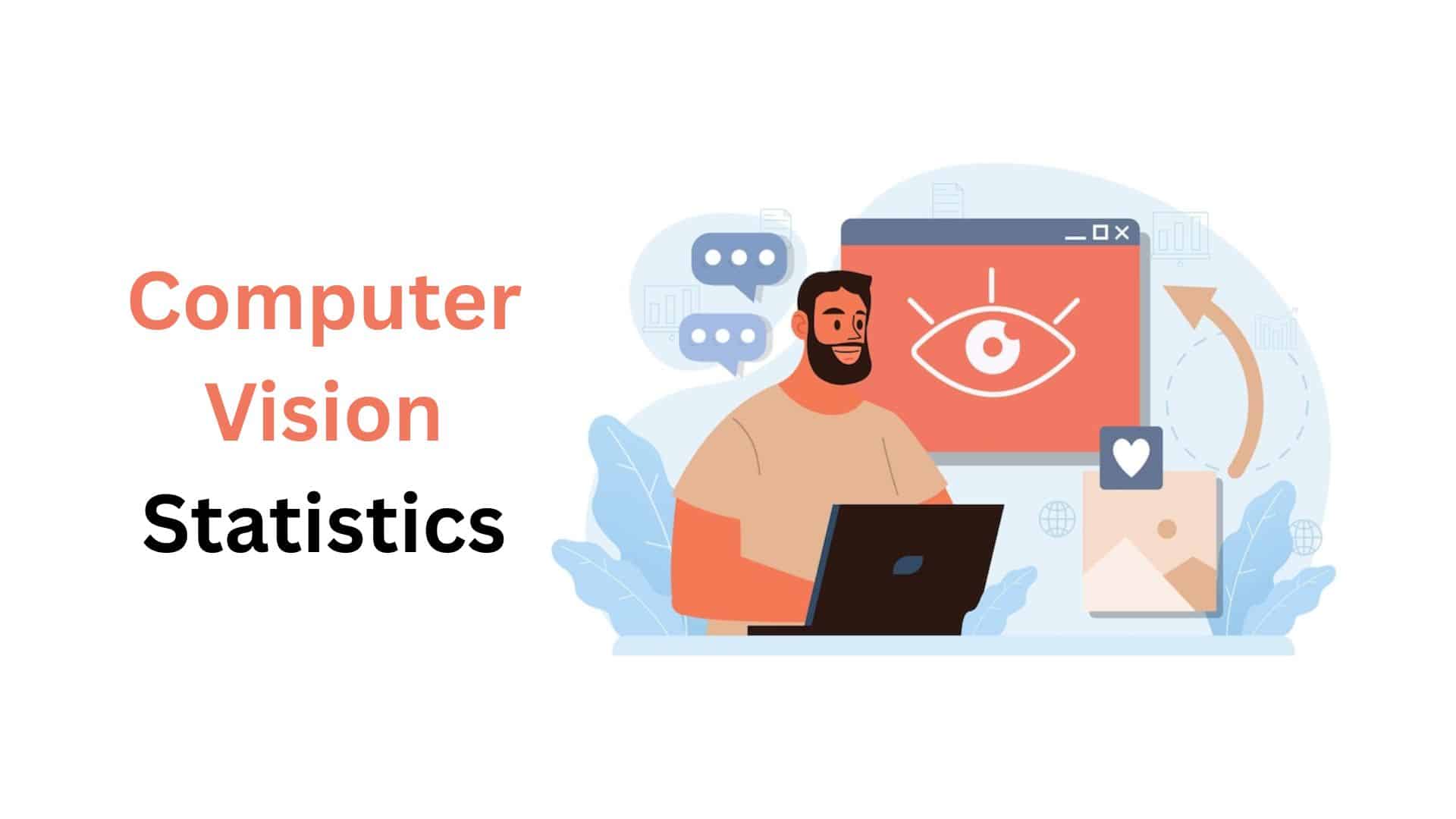Call Center Statistics By AI Technology, Industry And Facts (2025)

Updated · Apr 23, 2025


TABLE OF CONTENTS
- Introduction
- Editor’s Choice
- Call Center Statistics for Efficiency
- Customer Service Statistics on AI Technology Adoption
- Call Center Industry Trends
- Critical Challenges to Call Center Productivity
- Customer-Centric Call Centers Statistics
- Business and Technology Call Center Statistics
- Future of Call Centers Statistics
- Conclusion
Introduction
Call Center Statistics: As global business and economic activities keep expanding, more companies hire outside help to handle a wide range of tasks—from simple, repetitive jobs to complex, high-priority work. Call centers are one example of the growing global outsourcing industry. They’re often the most visible part of a company’s outsourcing strategy because they deal directly with customers one-on-one, making them especially valuable to their businesses.
Not all call centers are outsourced, and not all are just for customer service. The structure and purpose of a call center can vary depending on a company’s needs and goals. In this article, we shall shed more light on call center statistics.
Editor’s Choice
- Compared to traditional contact centers, using cloud-based contact centers can lower costs by 27% and reduce downtime by 35%.
- Call Center Statistics stated that around 59% of people say their standards for customer support are higher than they were a year ago.
- Only 26% of people believe they get excellent support from service centers, while 49% disagree.
- About 66% of global contact center leaders said their centers are in the United States.
- A study of over 750 customer service workers showed that about two-thirds of call centers still rely on outdated systems instead of modern solutions.
- Roughly 34% of Americans said being unable to speak to a real person is the most annoying part of customer service.
- The global market for AI in call centers could grow to $4.7 billion by 2026, driven by automation and new tech.
- 72% of people expect support agents to recognize who they are and understand past purchases or interactions.
- 68% said a kind agent made the experience better
- Call Center Statistics stated that nearly 62% appreciated when agents were smart and solved issues quickly.
- Improving first-call resolution by just 1% can save an average call center $276,000 annually.
- S. call centers spend $12.4 billion every year checking caller identity. 59% of calls need this step, but only 3% are fully automated.
- 46% of global call center managers expect 5–10% growth in team size
- Employees who work from home can save a company about $25,000 a year without hurting service quality.
- Bad customer service causes U.S. companies to lose about $41 billion annually.
- Hiring a call center worker in the U.S. costs about $20/hour, while the same job in India averages around $12/hour—including wages, tech, and phone services.
Call Center Statistics for Efficiency
#1. Average Speed of Answer (ASA)
Waiting on hold can feel endless, and no music can fix that. That’s why call center managers track Average Speed of Answer (ASA), which shows how fast agents pick up incoming calls. A common goal is the 80/20 rule, meaning 80% of calls are answered in under 30 seconds.
But speed isn’t the only thing that matters. 44% say they care more about speaking with a real person than how quickly they get help, especially during tough or complicated issues. A good ASA helps keep wait times low, but must also be matched with helpful and caring service.
#2. Average Handle Time (AHT)
ASA only measures how fast a call is answered, not how long it takes to fix the issue. That’s where Average Handle Time (AHT) comes in. AHT measures the full length of a call, from start to finish, and shows how long it takes to solve a problem. It’s usually tracked in minutes or sometimes hours, depending on the situation.
#3. Total Resolution Time
Some problems can’t be fixed in just one phone call. A return may be involved, or more time is needed to investigate the issue. That’s why it’s important to measure Total Resolution Time, which includes all the time it takes to solve a customer’s request fully. This might be measured in days or weeks instead of minutes or hours.
#4. Occupancy Rate
The occupancy rate shows how much time your agents are spending working. But a 100% rate isn’t good — it means your team is overloaded. The best range is usually between 80% and 90%, which keeps agents productive without stressing them out.
#5. Post-Call Work Time
After finishing a call, many agents still have tasks like writing notes or completing forms. This is called Post-Call Work Time and is usually tracked in minutes. Managers use this number to balance how much time reps spend helping customers vs. doing follow-up work.
#6. Call Abandonment Rate
When customers wait too long, they often hang up — this is the call abandonment rate. A high ASA (slow answers) usually leads to a high abandonment rate. This also affects First Call Resolution (FCR) because it might take multiple tries before a customer talks to someone.
Try to keep the abandonment rate under 5%. Also, look at exactly when calls are being dropped—for example, are people hanging up after 30 seconds or 2 minutes? Use that information to improve your process.
#7. Service Level Agreement (SLA)
If your company offers different service plans, you might have Service Level Agreements (SLAS) that promise certain response times. For example:
- Gold plan users might get a 1-hour response time
- Platinum plan members might expect help in 30 minutes
SLAS aren’t just for customers. Your call center can also set internal SLAS, like the 80/20 ASA rule. Use industry benchmarks to set these goals, but don’t forget to update them regularly to stay on track.
#8. Don’t Fall Behind on Customer Expectations
A recent survey found that 40% of people will stop doing business with a company after just one bad service experience. This shows how important it is to monitor these metrics and ensure that your team delivers great service every time.
Customer Service Statistics on AI Technology Adoption
- COX used an AI-based tool to help its teams work faster. The accounts team’s average handle time (AHT) was cut down by 3 seconds, and the residential tech team’s by 49 seconds, making customer calls more efficient.
- One out of three company leaders using AI says that predicting what customers want and offering personalized service are key to achieving better returns on their investment.
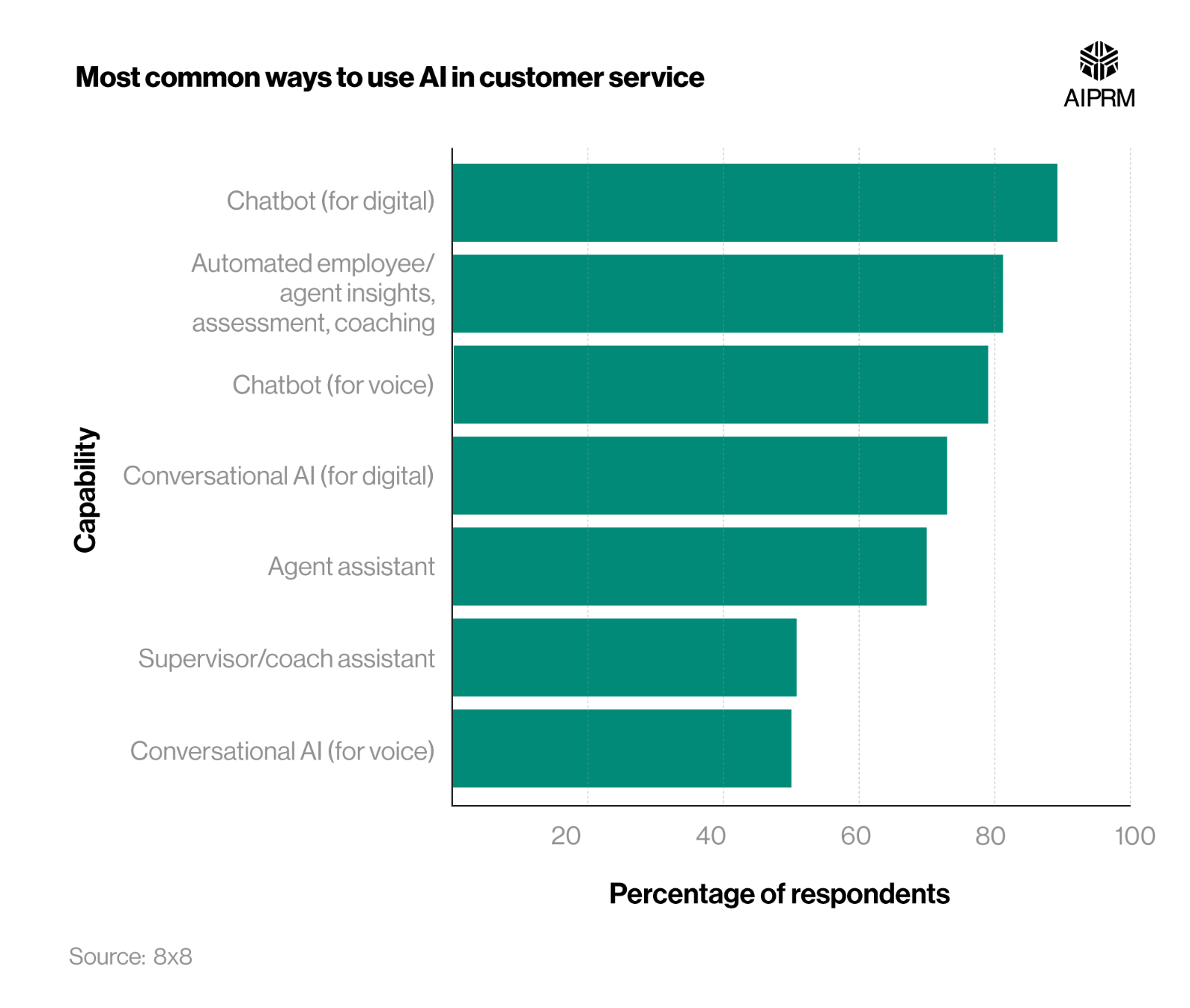 (Source: aiprm.com)
(Source: aiprm.com)
- Around 79% of marketing professionals think Generative AI will help businesses give customers a better overall experience.
- Only 25% of contact centers say that automation is a regular part of their daily work, which shows that live agents still play a big role alongside AI tools.
- Call Center Statistics stated that nearly 45% of customer support teams have already started using AI tools.
- Since 2023, the global value of the Generative AI market has grown by $22 billion.
- Nearly half of support teams believe AI is changing how customer service jobs work.
- Call Center Statistics stated that nearly 69% of top-level leaders agree, but only 34% of support agents agree. Also, 43% of agents believe their roles haven’t changed much.
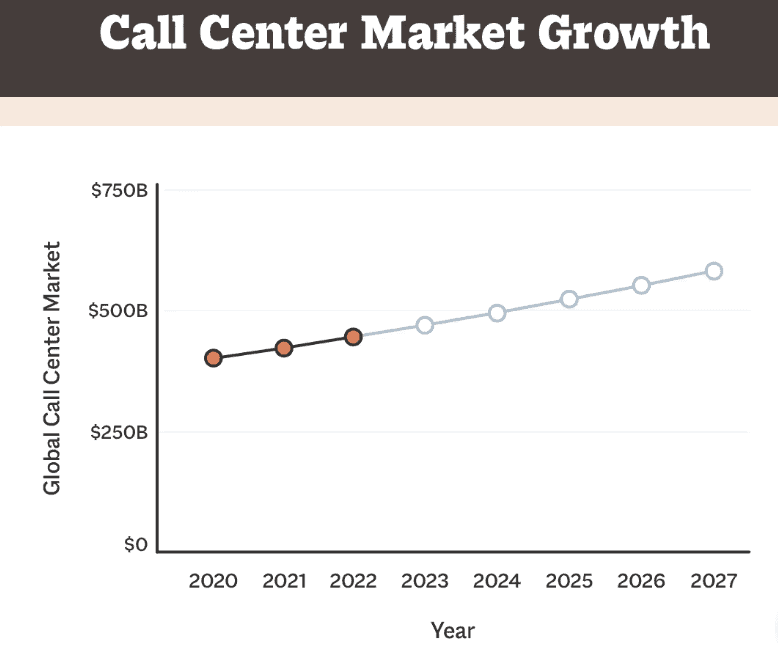 (Source: smith.ai)
(Source: smith.ai)
- Call Center Statistics stated that nearly 75% of support teams say that AI is changing how success is measured in customer service.
- 88% of contact centers use AI-powered tools to improve customer experience.
The performance indicators most likely to change due to AI include:
- Customer Satisfaction (CSAT): 38%
- Resolution Time: 31%
- Average Handle Time (AHT): 30%
- First Response Time: 29%
- 88% of executives say call recording is the most commonly used technology in today’s contact centres.
Call Center Industry Trends
- Call Center Statistics stated that nearly 59% of Millennials and 57% of Gen Z prefer getting help through social media instead of traditional channels.
- 66% of support centers are putting money into analytics software to measure customer satisfaction and service quality.
- About 70% of CX leaders plan to use generative AI technology within the next 2 years to improve customer service.
- By 2024, more than 8.4 billion smart voice assistants, such as Alexa and Google Assistant, will be active worldwide.
- The market for cloud-based contact center platforms is expected to hit $82.43 billion by the year 2030.
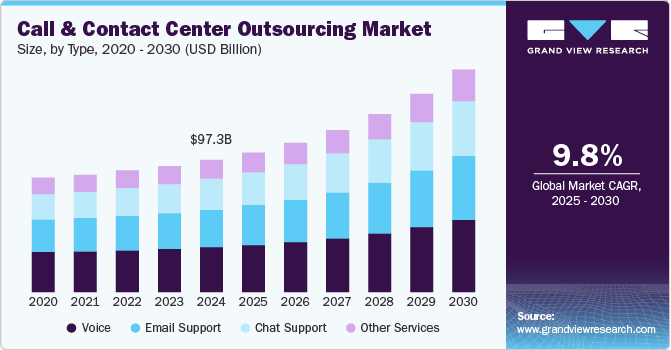 (Source: grandviewresearch.com)
(Source: grandviewresearch.com)
- The global call center industry, worth $404.3 billion in 2020, is forecasted to grow to around $607.6 billion by 2027.
- 91% of businesses plan to increase their investment in AI and big data tools to upgrade customer service in their contact centers.
- Call Center Statistics stated that nearly 35% of customers say they choose to use chatbots when that option is available, showing these tools are becoming more accepted.
- The market for contact center software was valued at around $21.5 billion in 2020, and it’s expected to grow to $61.7 billion by 2026.
- By 2025, 80% of companies are expected to move away from traditional mobile apps and switch to messaging tools like SMS or Facebook Messenger to deliver smoother customer service.
- AI is expected to boost call center productivity by 35% by 2040, helping teams work more efficiently.
Critical Challenges to Call Center Productivity
- Call centers face many problems, especially employee turnover, stress, burnout, and staff absences.
- Employee turnover remains a major problem in call centers, ranging from 30% to 45%.
- Some reasons people leave include high stress, low wages, limited career growth, pressure to meet targets, bad management, and too much work.
- When workers quit, companies lose thousands of dollars.
- All the time and money spent on training benefits another company when the employee leaves.
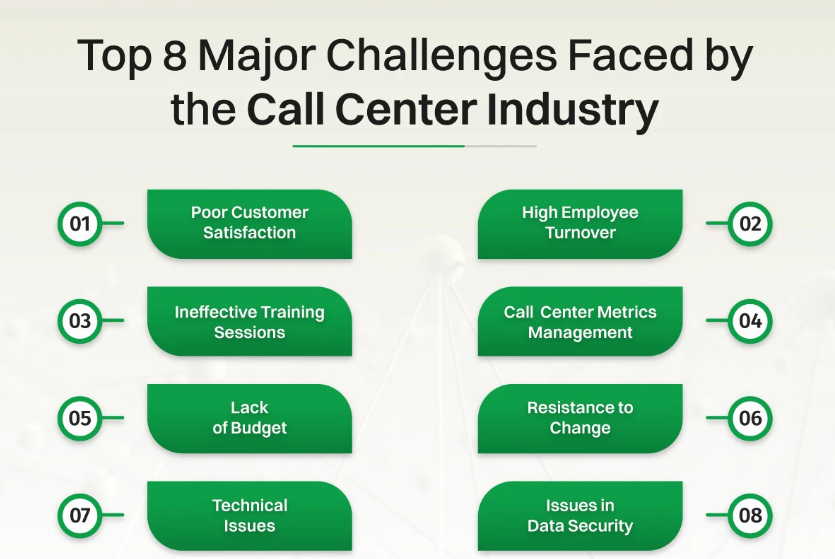 (Source: dialaxy.com)
(Source: dialaxy.com)
- Then, the company has to spend even more to hire and train someone new. This makes turnover one of the costliest issues in the industry.
- Customer service jobs will drop by 5% over the next 10 years. This is because more people use automated systems, apps, and online self-service tools instead of calling for help.
- Even with fewer roles, around 365,000 new job openings are expected yearly to replace workers who retire or switch jobs or industries.
- A study from Cornell University shows that in-house teams have about a 6% absentee rate, while outsourced call centers have a 10% rate.
- Overall, call center workers miss about 8.2 days per year, which is more than the 7.4-day average in other industries. This is mostly caused by job-related stress and mental health challenges.
- Even though companies use AI tools like chatbots and self-help features, call volumes are still increasing.
- Call Center Statistics stated that about 58% believe this growth will continue as customers rise and people reach out more often.
Customer-Centric Call Centers Statistics
- Getting back to a lead within 60 seconds can increase your chances of turning it into a customer by almost 400%.
- 34% of Americans say they get most frustrated with automated phone systems (IVR) and the inability to reach a real person.
- 78% think the worst part of calling a company is being put on hold for too long.
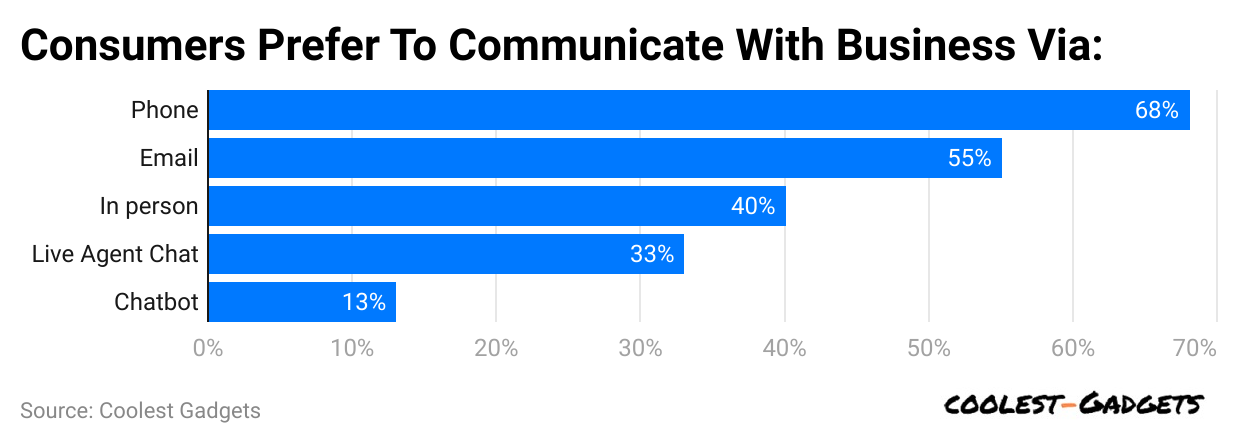 (Reference: invoca.com)
(Reference: invoca.com)
- Even though 92% of customer service happens over the phone, 85% of callers are unhappy with how those calls go.
- 78% of customers like it better when agents speak naturally instead of reading off a script.
- Call Center Statistics stated that nearly 65% of possible buyers want to contact companies by phone.
- When contacting a business, 60% of people prefer talking to a real person over dealing with automated systems.
- 90% of customers expect to get help within 10 minutes or less when they reach out with a question.
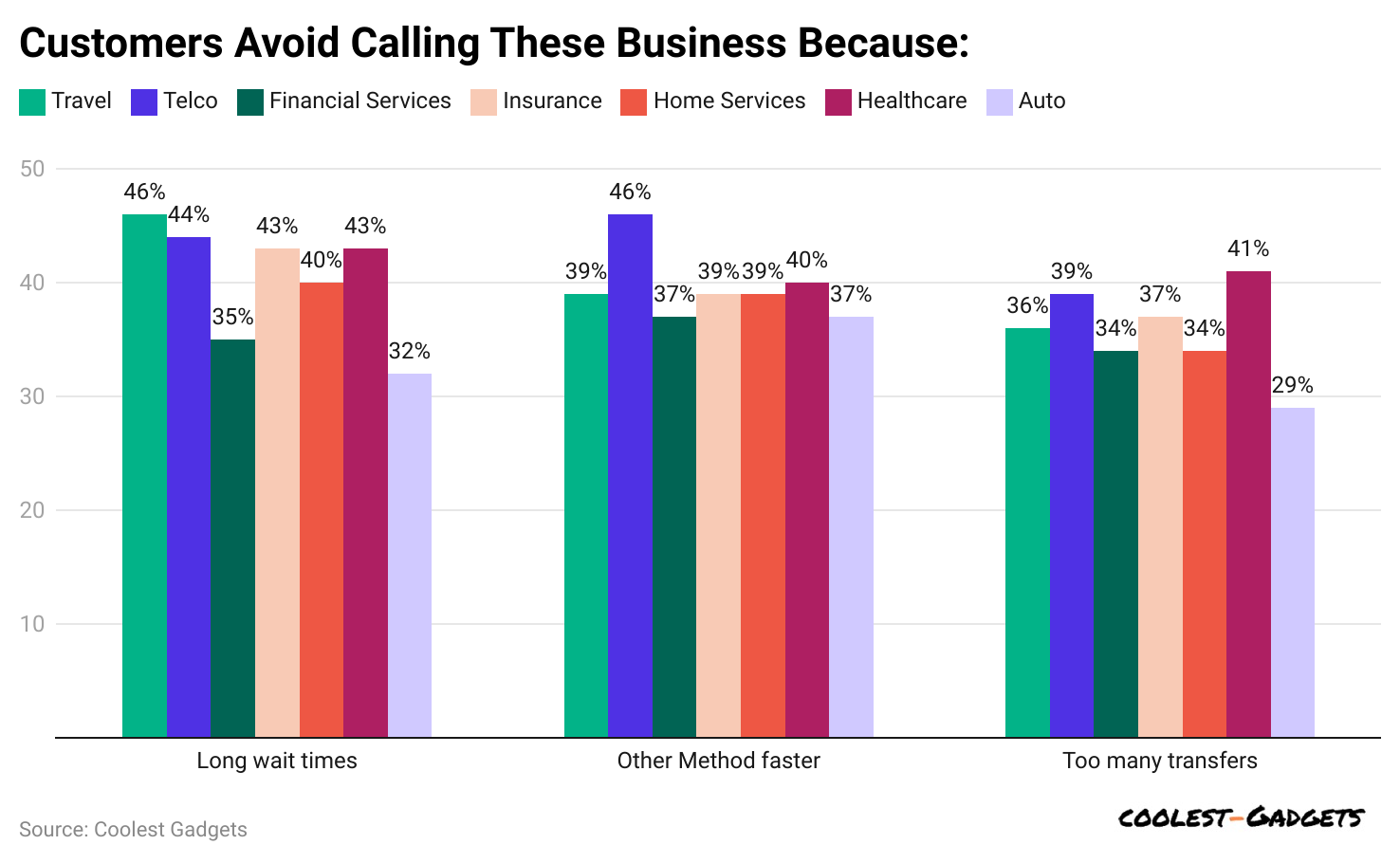 (Reference: invoca.com)
(Reference: invoca.com)
- Call Center Statistics stated that nearly 86% of users believe chatbots should always allow switching to a human agent.
- 51% of people want businesses to offer round-the-clock (24/7) customer support.
- 70% of customers feel more satisfied with companies that reach out first with helpful service updates.
- Call Center Statistics stated that nearly 42% of Americans prefer to call customer support when they have an issue.
- 80% of customers have stopped using a brand because of poor customer service.
- 66% of people use at least three different channels (like phone, email, or chat) to get help from a company.
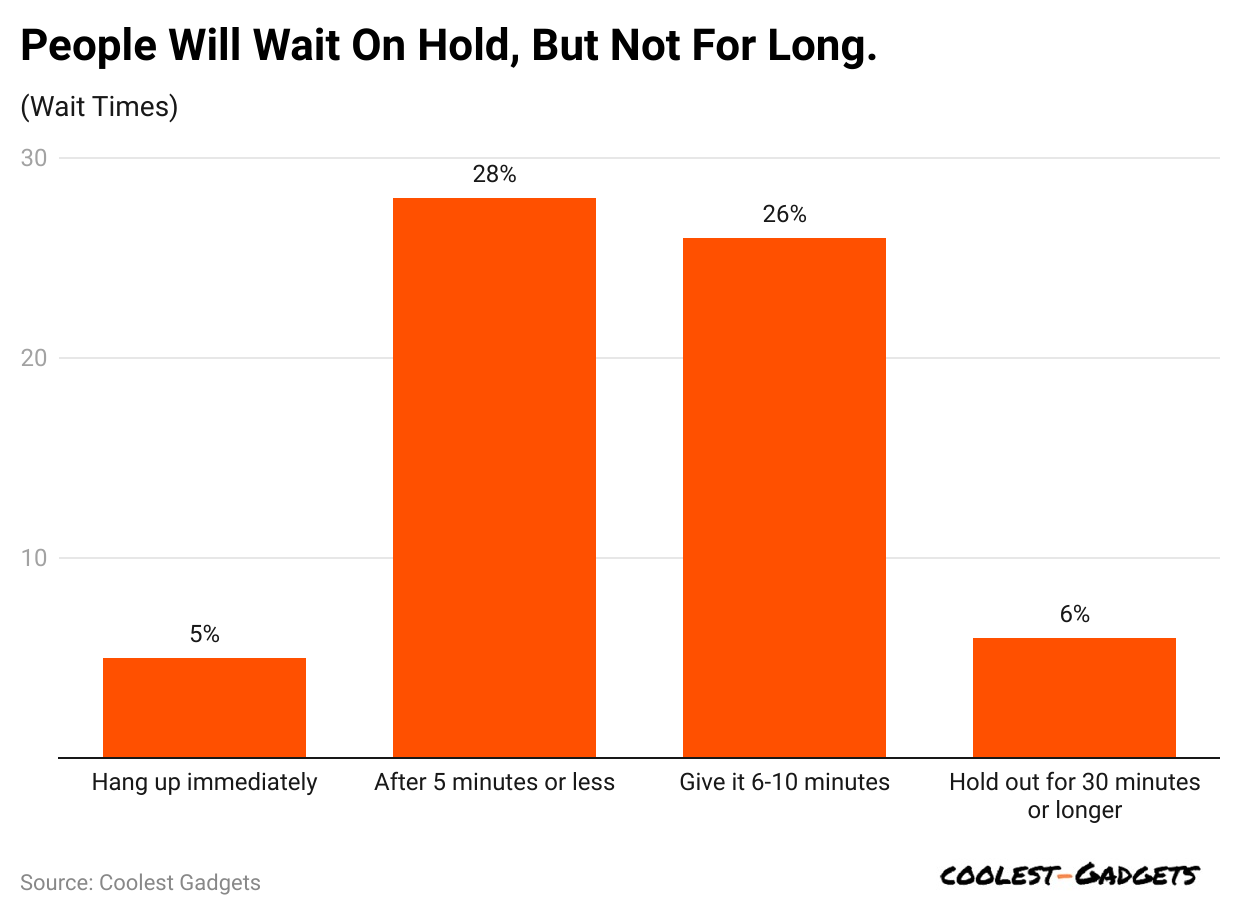 (Reference: invoca.com)
(Reference: invoca.com)
- Businesses that let customers use multiple ways to reach them (like chat, email, and phone) keep 90% more customers than those using just one method.
- 88% of U.S. customers expect companies to have an online self-service option, like a help center or FAQ page.
Business and Technology Call Center Statistics
- Poor customer support is costing businesses nearly $75 billion each year.
- Call Center Statistics stated that nearly 67% of companies that gather customer feedback have seen better customer satisfaction and business growth.
- Even though 86% of businesses say they serve customers who aren’t fluent in English, only 65.5% say they offer support in other languages.
- About 87% of call center workers say their job causes stress.
- On the other hand, Smith.ai’s team is highly rated on Glassdoor, which shows a more positive work culture.
- 67% of B2C (business-to-consumer) companies and 66% of B2B (business-to-business) companies mainly use live chat for customer support instead of selling.
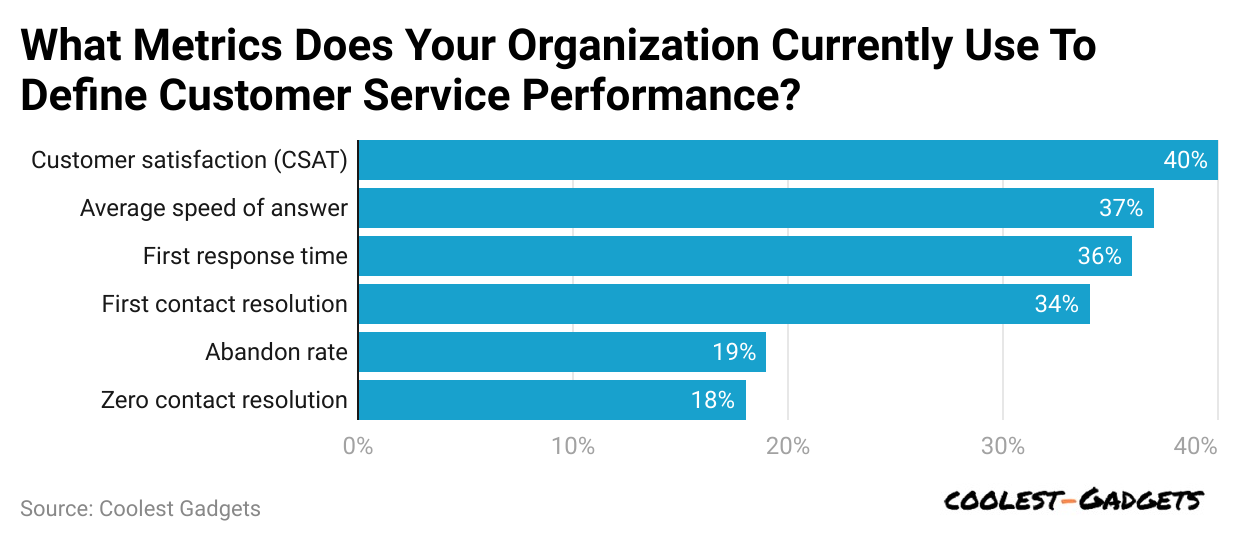 (Reference: fitsmallbusiness.com)
(Reference: fitsmallbusiness.com)
- 79% of businesses say live chat helps them boost sales, increase revenue, and build stronger customer loyalty.
- 45% of companies using online self-help tools have noticed more visitors and fewer incoming calls.
- Adding live video or voice chat to websites can lower support costs by up to 50%.
- Call Center Statistics stated that around 36% of call centers now use cloud-based technology.
- Moving to the cloud can cut average call answer time by 50% and improve the number of answered calls by 5%.
Future of Call Centers Statistics
- 65% of workers want to stay remote full-time, and another 31% prefer a mix of remote and office work. That adds up to 96% of people who want at least some remote work in the future.
- Even though chatbots and automation are growing, traditional tools like phones and emails still make up 81.5% of incoming support requests.
- That’s because customers still prefer the real connection of speaking to an actual person.
- Around 66% of companies with call centers want to spend money on advanced analytics to improve customers’ experiences.
- Smart tools like conversation intelligence help customer service teams better understand customers’ needs.
- Call Center Statistics stated that nearly 76% of call centers plan to invest in artificial intelligence (AI) in the next two years. AI tools like automated quality checks help teams work faster and better serve more people.
- A report by Forrester shows that 82% believe call data can reveal big problems that might otherwise go unnoticed.
- Phone calls are useful for information — customers say what they like, what’s not working, and how they want to interact.
 (Reference: fitsmallbusiness.com)
(Reference: fitsmallbusiness.com)
- After using conversation intelligence, 48% of companies expect better customer service. Other expected benefits include higher sales, better product development, and more productive employees.
- There’s a clear gap between agents and managers regarding work preferences. 68% of agents say hybrid work helps them serve customers better, but only 35% of managers agree.
- Call Center Statistics stated that nearly 35% of managers think working fully in the office leads to better service, while 18% of agents agree.
- Managers who use conversation intelligence are 50% more likely to say their agents feel good about coaching and feedback. Many leaders see these tools as key to improving team performance.
- 85% of call center leaders plan to use conversation intelligence tools within the next year. This shows a strong push toward using technology to improve customer service and make call centers more efficient.
Conclusion
Call centers are still a big part of how companies support their customers and grow their businesses. The industry is changing fast as more people call in and technology like AI and cloud tools become more common. Still, problems like high staff turnover, stress on employees, and higher customer demands are tough to manage.
By using smart tools, improving employee training, and listening to customer feedback, businesses can offer better service, work more efficiently, and stay ahead in a competitive market. We have shed enough light on Call Center Statistics through this article.
Sources
FAQ.
Call centers often follow the 80/20 rule, which means 80% of calls should be answered in 20 seconds or less. While this is a useful goal, it doesn’t fully reflect customer satisfaction, how long people wait, or how many callers give up before reaching an agent.
The SLA (Service Level Agreement) formula determines when a service is available or the percentage of calls or requests answered within a specific time. It’s calculated as follows: (Number of successful/on-time events ÷ Total number of events) × 100. For example, in a call center, it could measure the percentage of calls answered within a set number of seconds.

Saisuman is a talented content writer with a keen interest in mobile tech, new gadgets, law, and science. She writes articles for websites and newsletters, conducting thorough research for medical professionals. Fluent in five languages, her love for reading and languages led her to a writing career. With a Master’s in Business Administration focusing on Human Resources, Saisuman has worked in HR and with a French international company. In her free time, she enjoys traveling and singing classical songs. At Coolest Gadgets, Saisuman reviews gadgets and analyzes their statistics, making complex information easy for readers to understand.


